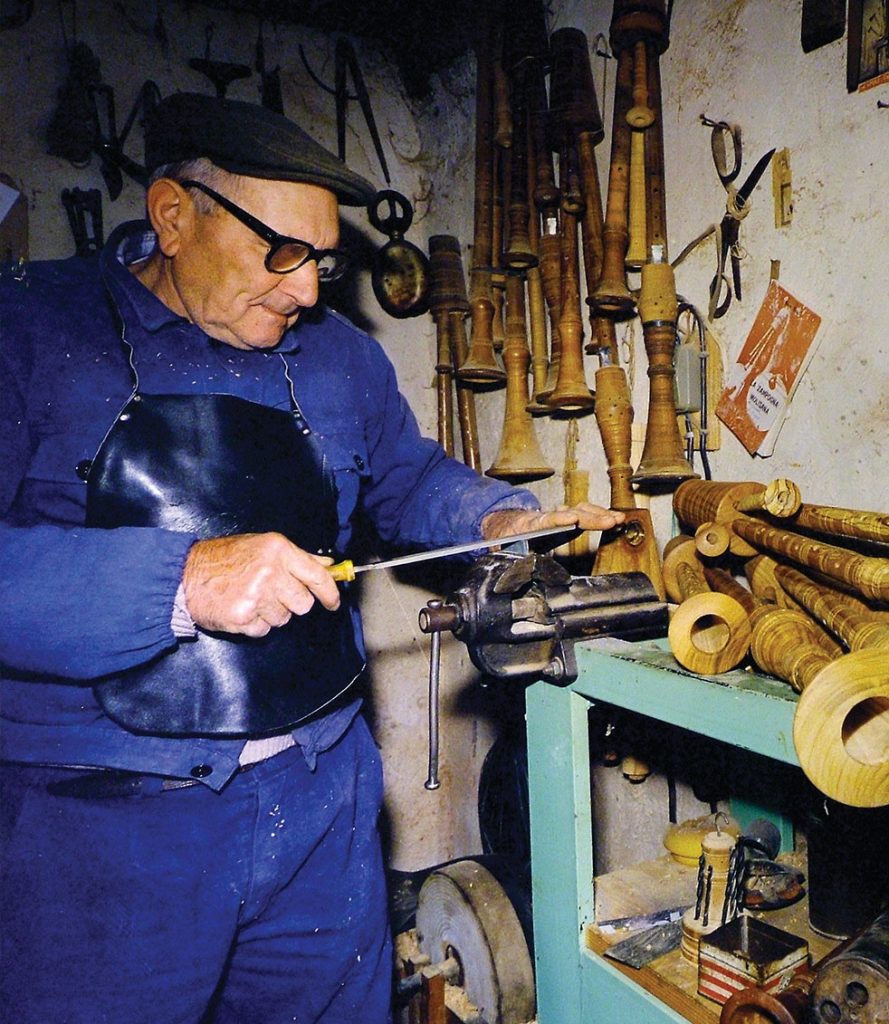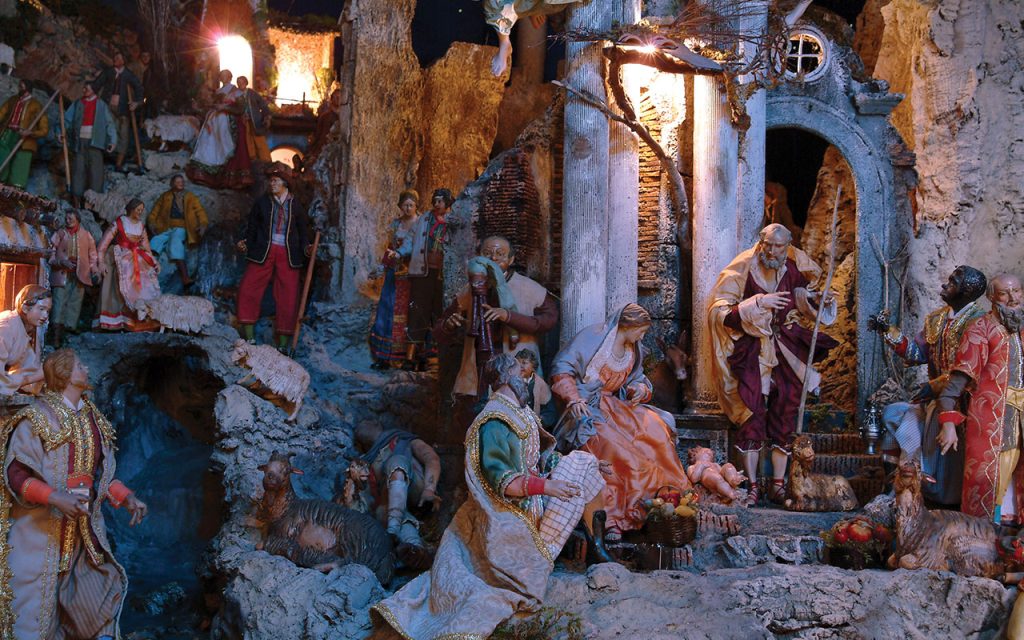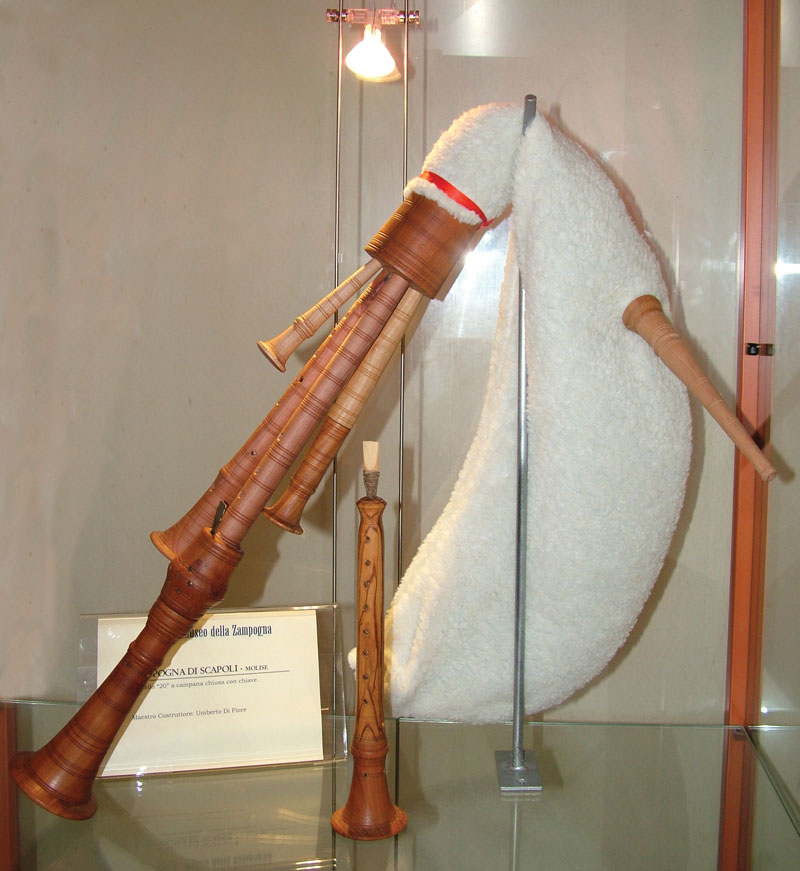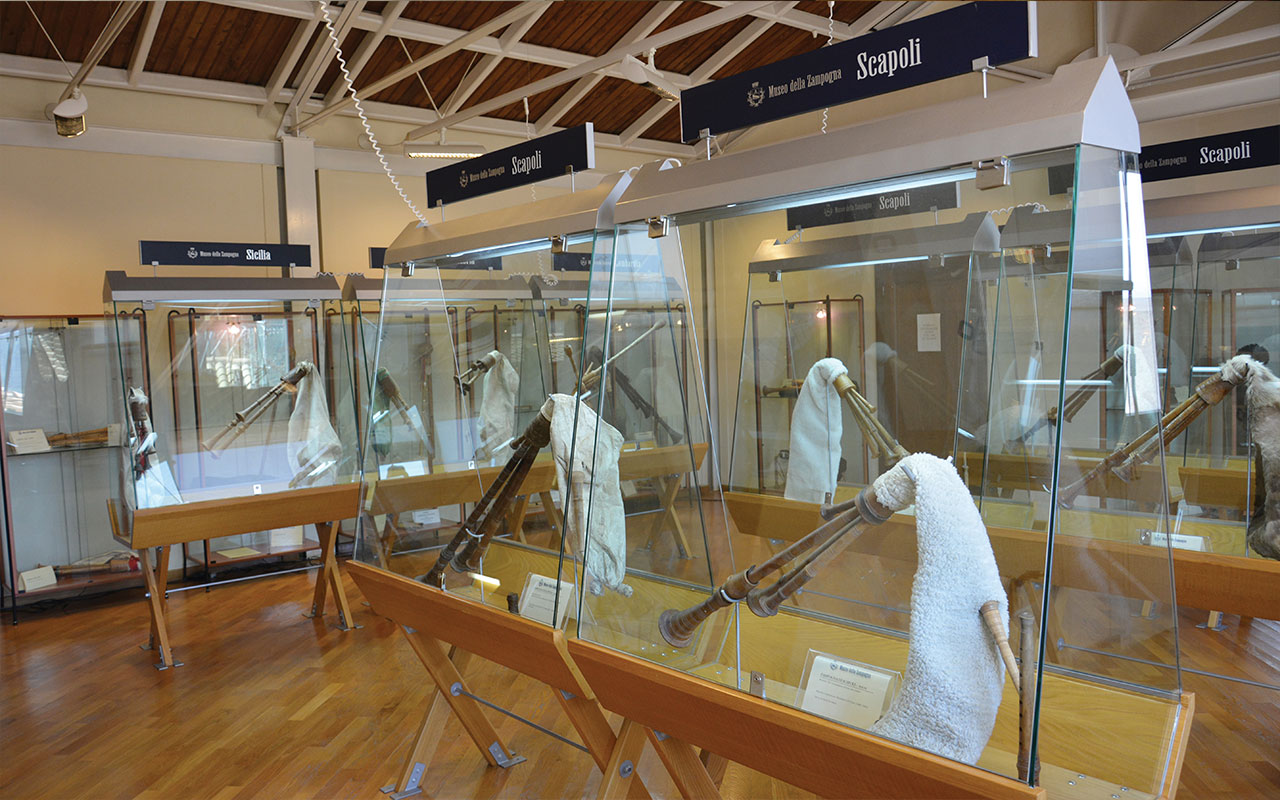Bagpipes and shawms, very ancient musical instruments, linked to shepherds, are the symbol of Scapoli, a village in the province of Isernia (Molise). In this town, also known for its scenic and natural beauty, local artisans make typical traditional musical instruments by hand. Using precious woods, in their workshops they create unique, highly valuable pieces appreciated all over the world.

The master craftsmen of yesterday and today
Bagpipes, shawms, but also accordions and tambourines, come to life thanks to the extraordinary skill of the master craftsmen, real sculptors and wood carvers. The first of these was, in the early 900s, Benedetto Di Fiore, who founded the “Artisan Workshop”. They followed him Ettore Di Fiore, Gerardo Guatieri, Luciano Di Fiore, Palmerino Caccia and Angelo Guatieri.

Their art has been transmitted to the new generations, who today, through the "Fabbrica delle zampogne", continue to create new masterpieces, using the same techniques as their precursors, and working on olive, cherry and plum wood which is rich in the territory (these are the names of the new master craftsmen: Fabio Ricci, Luigi Ricci, Paolo Di Fiore, Franco Izzi, Umberto Di Fiore, Romeo Ricci).

Capital of bagpipes
In Scapoli, the sound of the bagpipes, which are essentially of two types: "a key" and "zoppa", can be heard all year round, but at Christmas and in the days preceding it, it is truly magical to listen to the music melodious of these fascinating instruments spread along the streets of the village. An ancestral rite that gives deep emotions to the eyes and hearts of those present. The art and care with which these instruments are made have made the small town of Scapoli famous throughout the world, to the point of being called the "capital of bagpipes".

Bagpipes from all over the world at the International Bachelor Museum
The municipality hosts the International Bagpipe Museum, named after its creator Pasquale Vecchione. The museum is located inside Palazzo Mancini, which dominates the town from above. Here, on three exhibition floors, you can admire the numerous models produced over time by local artisans, together with other bagpipes from all over the world and made in different eras. The museum also collects literary and photographic evidence and hosts a singular permanent nativity scene of the Neapolitan School, created by the Capuano Art Masters of San Gregorio Armeno, Naples. Furthermore, every year, the International Bagpipe Festival which attracts numerous visitors and tourists to this evocative area of Molise.

Cultural heritage
Scapoli's bagpipes and ciaramelle are highly sought-after musical instruments, appreciated both in Italy and abroad for their uniqueness and typicality. Their creation by hand, using particular tools that cannot be found today, contributes significantly to the recovery of the local cultural heritage. The bagpipe is a very ancient rural musical instrument, a descendant of the legendary flute god Pan, half man and half goat. Historically, the bagpipe accompanied the shepherds who entertained themselves with amusing melodies while leading their flocks to pasture. Today, the pipers, playing their bagpipes in the streets and alleys of our villages, mark the calendar of Christmas celebrations, keeping alive an ancient tradition which was originally pagan.
(Photo: www.museodellazampogna.it)





